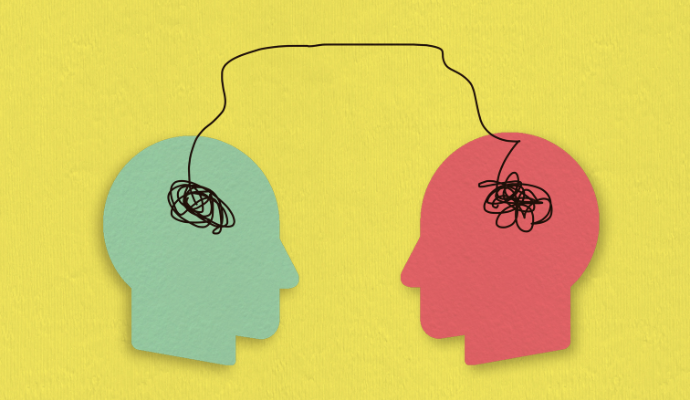What Is the Difference Between Organizational & Personal Health Literacy?
Organizational health literacy acknowledges that patients are not responsible for improving their own personal health literacy.

Source: Getty Images
- Healthcare providers looking into the concept of health literacy need to be aware of its two key caveats: organizational health literacy and personal health literacy.
In its latest update, Healthy People, an initiative under the Department of Health and Human Services, specified organizational and personal health literacy under the umbrella of health literacy.
Indeed, health literacy has long been a pillar of the Healthy People program, which is hosted by the HHS Office of Disease Prevention and Health Promotion. Every decade, Healthy People provides updated measurable public health goals.
Health literacy was a key pillar of both Healthy People 2010 and Healthy People 2020; both sets of guidelines defined health literacy as “the degree to which individuals have the capacity to obtain, process, and understand basic health information and services needed to make appropriate health decisions.”
But Healthy People 2030 has expanded on that definition, acknowledging the concepts of personal health literacy and organizational health literacy and how they may differ. To be clear, Healthy People 2030 did not necessarily invent organizational health literacy. But it did shine a spotlight on organizational health literacy and link it to six of Healthy People’s 2030 objectives:
- Increase the proportion of adults whose health care provider checked their understanding — HC/HIT‑01
- Decrease the proportion of adults who report poor communication with their health care provider — HC/HIT‑02
- Increase the proportion of adults whose health care providers involved them in decisions as much as they wanted — HC/HIT‑03
- Increase the proportion of people who say their online medical record is easy to understand — HC/HIT‑D10
- Increase the proportion of adults with limited English proficiency who say their providers explain things clearly — HC/HIT‑D11
- Increase the health literacy of the population — HC/HIT‑R01
As organizational health literacy integrates into the medical and public health industry’s vernacular, it will be critical for stakeholders to understand how it is distinct from personal health literacy.
Defining personal health literacy
Healthcare providers may be more familiar with the idea of personal health literacy because of their interactions with their patients.
Healthy People 2030 defines personal health literacy as “the degree to which individuals have the ability to find, understand, and use information and services to inform health-related decisions and actions for themselves and others.”
Personal health literacy can refer to the tools patients already have to engage in their own care. According to the Health Resources & Services Administration (HRSA), specifying personal health literacy emphasizes how patients can use healthcare information and not just understand it. The definition also emphasizes how patients can make informed healthcare decisions rather than simply “appropriate” healthcare decisions.
Healthy People 2030 stressed that healthcare entities can assess personal health literacy at any time, which helps healthcare researchers conduct population studies and studies on health literacy interventions.
Many different agencies offer tools for measuring personal health literacy. Validated tools from the Agency for Healthcare Research and Quality (AHRQ) include the Short Assessment of Health Literacy, which it offers in both English and Spanish. AHRQ also offers the Rapid Assessment of Health Literacy in English.
When healthcare organizations can measure personal health literacy, results can help them identify where patients need more support. On an individual level, this can help clinicians understand the most effective language and patient education tools for supporting patient engagement. And for the clinic, hospital, or health system, measures of personal health literacy may help direct organizational health literacy initiatives.
Defining organizational health literacy
Healthy People 2030 said it specified organizational health literacy under its health literacy umbrella in an effort to acknowledge that the responsibility of improving health literacy does not fall on the patient.
To that end, organizational health literacy is “the degree to which organizations equitably enable individuals to find, understand, and use information and services to inform health-related decisions and actions for themselves and others.”
Specifying this definition helps provide a public health perspective on health literacy and stresses the responsibility healthcare organizations have in promoting health equity by improving health literacy.
In response to the growing energy around organizational health literacy, AHRQ convened industry experts to develop 22 measures for providers and hospitals to assess their own organizational health literacy. The 22 measures fall under five domains, including
- Organizational structure, policy, and leadership
- Communication
- Ease of navigation
- Patient engagement & self-management support
- Measures that cut across domains
Using those measures, plus assessments of the personal health literacy of an organization’s patient population, health literacy leadership should create goals for improvement and develop measures to track progress. AHRQ and other leading industry groups have stressed that organizational health literacy efforts need to be equitable, meaning that every patient population has an equal opportunity to improve their health literacy.
Healthcare providers can work to support patients with varying personal health literacy levels by explaining concepts in easy-to-understand language. Most experts agree that explaining concepts at a lower baseline for personal health literacy can support all patients regardless of their own knowledge base.
The link between personal, organizational health literacy
Personal health literacy is intertwined with organizational health literacy because one cannot exist without the other. Because the onus is not on the patient to achieve high personal health literacy, organizational health literacy is essential. Some data shows that nearly a third of adults have low personal health literacy, showing that providers and health systems have room to grow in organizational health literacy.
Ultimately, improving personal and organizational health literacy is a question of health equity, Healthy People 2030 says on its website. Organizational health literacy efforts that support personal health literacy equips patients with the tools they need for self-management and clinical decision-making.
